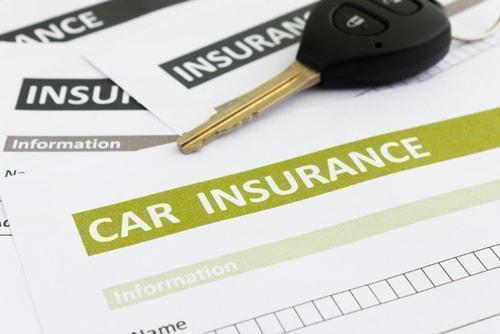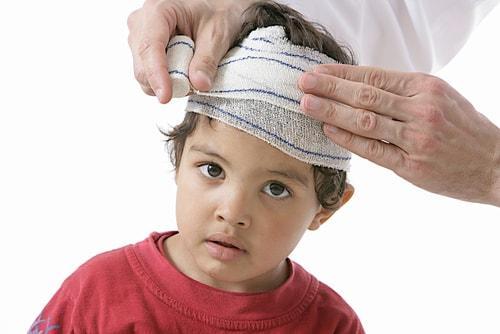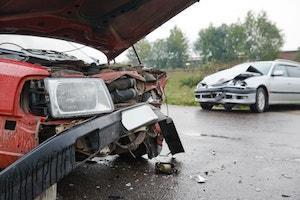Follow Us |Facebook
Call or Text for a Consultation
Recent Blog Posts
Dog Bites in Illinois
 Having a dog can be the most exciting milestone in a family’s life. Being able to play fetch and walk the dog is almost always what a family looks forward to when adopting a dog. Like all other animals, there are requirements and responsibilities on how to take care of the dog, including making sure that its vaccinations are up to date, feeding it, and keeping it from damaging other people’s property.
Having a dog can be the most exciting milestone in a family’s life. Being able to play fetch and walk the dog is almost always what a family looks forward to when adopting a dog. Like all other animals, there are requirements and responsibilities on how to take care of the dog, including making sure that its vaccinations are up to date, feeding it, and keeping it from damaging other people’s property.
Rabies Vaccination and Dog Bites
Any dog that has been with its owner for at least four months should be vaccinated against rabies by a veterinarian with a valid license. Within one year of the first round of rabies vaccinations, the dog should be vaccinated again. All other vaccinations for the dog must be compliant with USDA licenses of vaccines administered. If a bite occurs by a dog that is exempt from a vaccination for health reasons, it will be treated as a dog that was not vaccinated, re-examined by a veterinarian will a valid license, and vaccinated against rabies if the dog’s health improves.
Driving without Car Insurance in Illinois
 The best feeling in the world is when a person gets his or her driver's license after countless hours of studying just to take the test. However, in order to have the best driving record possible, it is imperative that the person who just received his or her driver's license understand the basic concepts of mandatory state auto insurance and required liability limits. If the person with the newly received driver's license does not meet the state requirements for liability limits, then he or she may face some very serious consequences.
The best feeling in the world is when a person gets his or her driver's license after countless hours of studying just to take the test. However, in order to have the best driving record possible, it is imperative that the person who just received his or her driver's license understand the basic concepts of mandatory state auto insurance and required liability limits. If the person with the newly received driver's license does not meet the state requirements for liability limits, then he or she may face some very serious consequences.
What Are the State Liability Limits?
In the state of Illinois, the mandatory car insurance liability limits are as follows:
- $25,000 bodily injury or death of one person in a car accident;
- $50,000 bodily injury or death of two people or more in a car accident; and
- $25,000 property damage of another person, such as a car.
What Information Should be Provided for Medical Malpractice?
 Medical doctors are almost always very good at identifying key medical problems and getting them resolved as quickly as possible. These doctors have studied for decades to perfect this art. In order to be a good doctor, one has to take all coursework very seriously. There have been far too many cases in which doctors may have misdiagnosed medical problems or even prescribed the wrong medication to their patients, therefore causing unwanted results, including serious injury and death.
Medical doctors are almost always very good at identifying key medical problems and getting them resolved as quickly as possible. These doctors have studied for decades to perfect this art. In order to be a good doctor, one has to take all coursework very seriously. There have been far too many cases in which doctors may have misdiagnosed medical problems or even prescribed the wrong medication to their patients, therefore causing unwanted results, including serious injury and death.
What to Do if Affected by Medical Malpractice
When addressed in court, the person affected will likely need to confirm his or her personal information, including full name, any previous names, current residence address, and date of birth.
The affected person will also need to describe the acts of the medical doctor, including specific diagnosis, procedures, tests, and treatments claimed to have caused the injuries. He or she will need to provide the dates of such acts, name and address of each witness, name and address of each knowing individual, and location of hospital and other medical records reflecting such acts.
Fatal Work Injury Statistics in Illinois
 Starting a career is one of the biggest milestones in a person’s life. Depending on the type of job that a person may accept, he or she may have to go through several physical examinations to be cleared for that job opportunity. Some medical problems may go undetected, or machinery may not work correctly, therefore potentially costing an employee his or her life. There are many ways to prevent such atrocities, and enhanced technology has assisted with keeping such numbers lower.
Starting a career is one of the biggest milestones in a person’s life. Depending on the type of job that a person may accept, he or she may have to go through several physical examinations to be cleared for that job opportunity. Some medical problems may go undetected, or machinery may not work correctly, therefore potentially costing an employee his or her life. There are many ways to prevent such atrocities, and enhanced technology has assisted with keeping such numbers lower.
Fatal Work Injuries from 2006-2015
In Illinois, there was a total of 172 fatal work injuries in 2015. There were 164 fatal work injuries from the prior year. Across the country, there were 4,836 fatal work injuries that were documented in 2015. In 2014, there were 4,821 professional fatalities.
The state of Illinois recorded over 200 fatal work injuries in 2006 and 2010. More than 150 professional fatalities occurred in 2007, 2008, 2011, 2013, 2014, and 2015. Lastly, a little over 150 fatal work injuries occurred in 2009, and less than 150 fatal work injuries in 2012.
Children and Traumatic Brain Injuries
 According to national statistics, more than 630,000 children are brought to emergency rooms each year because they have sustained some kind of traumatic brain injury (TBI). The Centers for Disease Control and Prevention (CDC) data shows that one in 30 children will sustain a brain injury by the time they reach 16 years of age. Young children, in particular, are more susceptible to brain injuries, and about one-third of children with TBIs will suffer from long-lasting or permanent disability from the injury.
According to national statistics, more than 630,000 children are brought to emergency rooms each year because they have sustained some kind of traumatic brain injury (TBI). The Centers for Disease Control and Prevention (CDC) data shows that one in 30 children will sustain a brain injury by the time they reach 16 years of age. Young children, in particular, are more susceptible to brain injuries, and about one-third of children with TBIs will suffer from long-lasting or permanent disability from the injury.
There have been multiple studies done which confirm that TBIs in children can have serious side effects on a child’s behavior, cognitive function, and IQ that can last for an extended period of time. Some of these studies reveal that recovery from brain injuries can go on for years and that there are certain factors – including whether the child has certain genes or the home environment the child lives in – which can affect recovery.
Motorcycles Are Everywhere
 Summer is in full swing and that means more motorcycles on Illinois roadways. Many motorcyclist enthusiasts say it is the feeling of the open road all around them that attracts them to the activity, but it is that openness that also leaves motorcycle riders vulnerable to serious injury or death in the event of a motorcycle crash.
Summer is in full swing and that means more motorcycles on Illinois roadways. Many motorcyclist enthusiasts say it is the feeling of the open road all around them that attracts them to the activity, but it is that openness that also leaves motorcycle riders vulnerable to serious injury or death in the event of a motorcycle crash.
Unlike other motor vehicles, which offer protection to the occupants who are inside, when a motorcycle is involved in a crash, the people on the bike are often thrown off. Even more dangerous, is that once the victims have landed on the ground, there is the additional risk of the motorcycle landing on top of them. According to national statistics, victims of motorcycles crashes are almost 30 times more likely to suffer fatal injuries than occupants involved in other types of motor vehicle crashes.
One of the key ways to decrease the number of motorcycle accidents is for both motorcyclists and vehicle drivers to be cognizant of each other and mindful that they are sharing the road.
AAA Study: Hangover Effect of Distracted Driving
 The dangers of distracted driving have been well publicized. Laws have been enacted, as well as hundreds—if not thousands—of safety campaigns produced alerting drivers of just how deadly this driving behavior can be. Yet, despite all these warnings, people continue to die in fatal crashes caused by a driver who just did not listen.
The dangers of distracted driving have been well publicized. Laws have been enacted, as well as hundreds—if not thousands—of safety campaigns produced alerting drivers of just how deadly this driving behavior can be. Yet, despite all these warnings, people continue to die in fatal crashes caused by a driver who just did not listen.
According to data from the National Safety Council, almost half of all drivers admit to using their smartphones while driving, both manually or with a voice-activated feature. Smartphone manufacturers continue to develop new technology to improve these voice-activated features as a way to get drivers to stop manually using their phones, but a new study reveals that drivers who use the voice-activated features may be just as dangerous to everyone else on the road.
The study was conducted by the AAA Foundation for Traffic & Safety. The study team found that there is what they referred to as a “hangover effect” that happens whenever a driver focuses his or her attention away from their driving. In fact, that can last for up to almost half a minute before the driver sees what is in front of them again.
Drunk Driving Crashes and Wrongful Death Lawsuits
 Summer is here and that means lots of cookouts, family get-togethers, beach days, and vacations. At many of these social gatherings alcohol is served, and all too often, drivers make the decision to get behind the wheel of their vehicles after they have been drinking, with tragic results.
Summer is here and that means lots of cookouts, family get-togethers, beach days, and vacations. At many of these social gatherings alcohol is served, and all too often, drivers make the decision to get behind the wheel of their vehicles after they have been drinking, with tragic results.
According to the National Highway Traffic Safety Administration. (NHTSA), there were 10,265 people killed in drunk driving accidents in 2015, the most current year for which statistics are available. This means that every day that year, 28 people were killed by a drunk driver. This was a sharp increase from the year before, when 9,943 people were killed in alcohol-related crashes.
In Illinois, approximately 1,000 people are killed each year in drunk driving crashes. About 35 percent of those drunk drivers are between the ages of 21 to 24. Each year, law enforcement in Illinois arrest almost 40,000 people on DUI charges, yet these horrible crashes still happen.
How Dangerous is a Whiplash Injury?
 One of the most common injuries suffered in car accidents is whiplash. This is particularly true in rear-end collisions. Approximately 120,000 people sustain whiplash each year. Yet while the injuries are usually minor, a victim can end up with permanent damage if not treated properly.
One of the most common injuries suffered in car accidents is whiplash. This is particularly true in rear-end collisions. Approximately 120,000 people sustain whiplash each year. Yet while the injuries are usually minor, a victim can end up with permanent damage if not treated properly.
What is Whiplash?
Whiplash occurs when a person’s head is moved forward and backward with great force. This force can cause the ligaments and muscles of the neck to pull beyond their normal range of motion. Although one of the most common causes of whiplash is motor vehicle accidents, this injury can occur in any type of accident which causes this type of force on the head, such as falls, sports accidents, or physical assault.
For minor whiplash injuries, doctors usually recommend rest and avoiding any kind of heavy physical activity. More serious cases can result in the need for extensive physical rehabilitation and/or surgery. When this happens, accident victims often face high medical expenses, as well as loss of income from being unable to work.
Bicycle Safety Tips
 The warm weather has finally arrived in Illinois. Along with that warm weather comes warm weather activities. One of the most popular is bike riding. Many people take advantage of the summer months to commute to work or as an alternative to hitting the inside of the gym. Unfortunately, the warm weather also brings an increase in bicycle accidents and injuries.
The warm weather has finally arrived in Illinois. Along with that warm weather comes warm weather activities. One of the most popular is bike riding. Many people take advantage of the summer months to commute to work or as an alternative to hitting the inside of the gym. Unfortunately, the warm weather also brings an increase in bicycle accidents and injuries.
According to national statistics, there are more than 700 people killed in bicycle traffic accidents each year. Another 50,000 are injured. And although you may think that the most vulnerable age group to bicycle accidents are children, the average age of bicyclists who are killed is 45. Additionally, most fatalities occur between the hours of 6 p.m. to 9 p.m. So how can bicyclists protect themselves from being in a bicycle accident?
Wear Brightly-Colored Clothing




